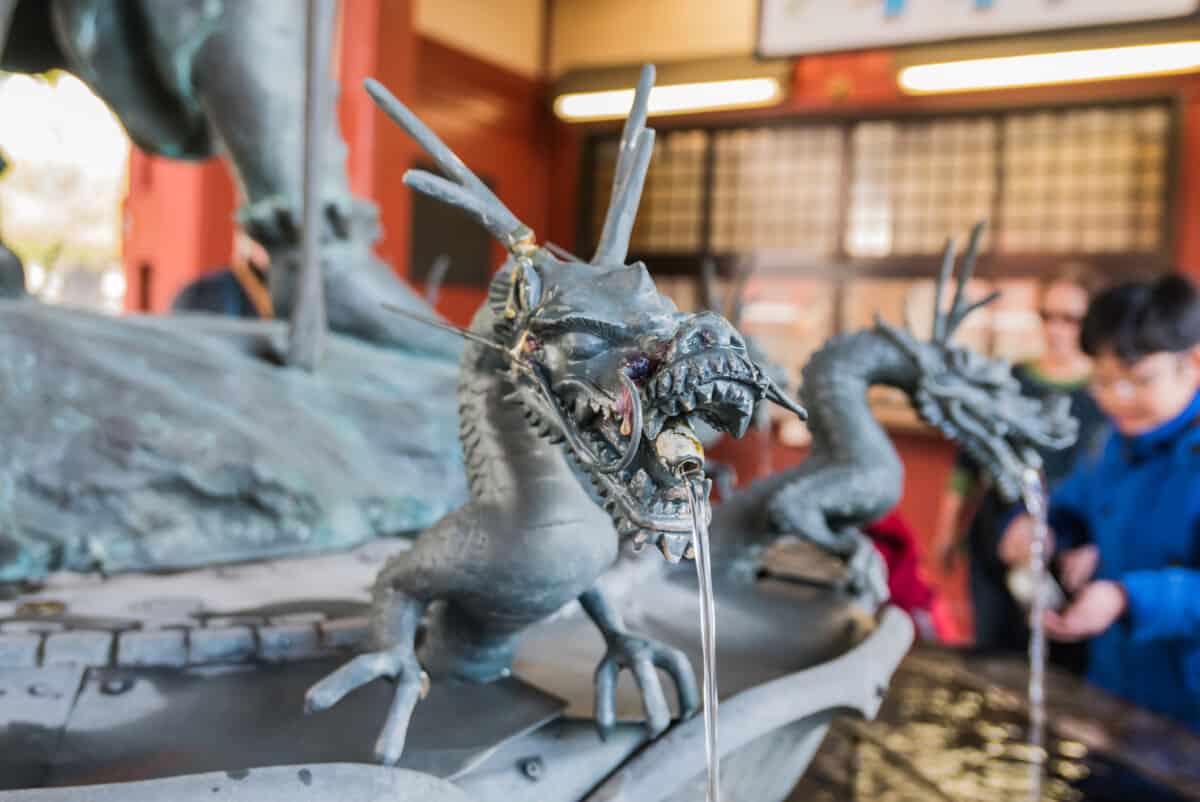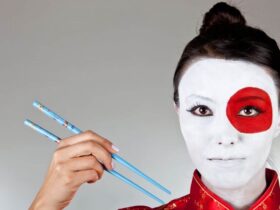Japan’s rich culture has developed over centuries, leading to a myriad of traditions and legends being passed down. Spirituality is a common thread within many of these traditions.
Multiple religions and faiths have existed throughout Japan, including many gods, kami, and deities.
Below are some of Japan’s most recognized gods, kami, and deities, including their history and their symbolism throughout Japanese culture.
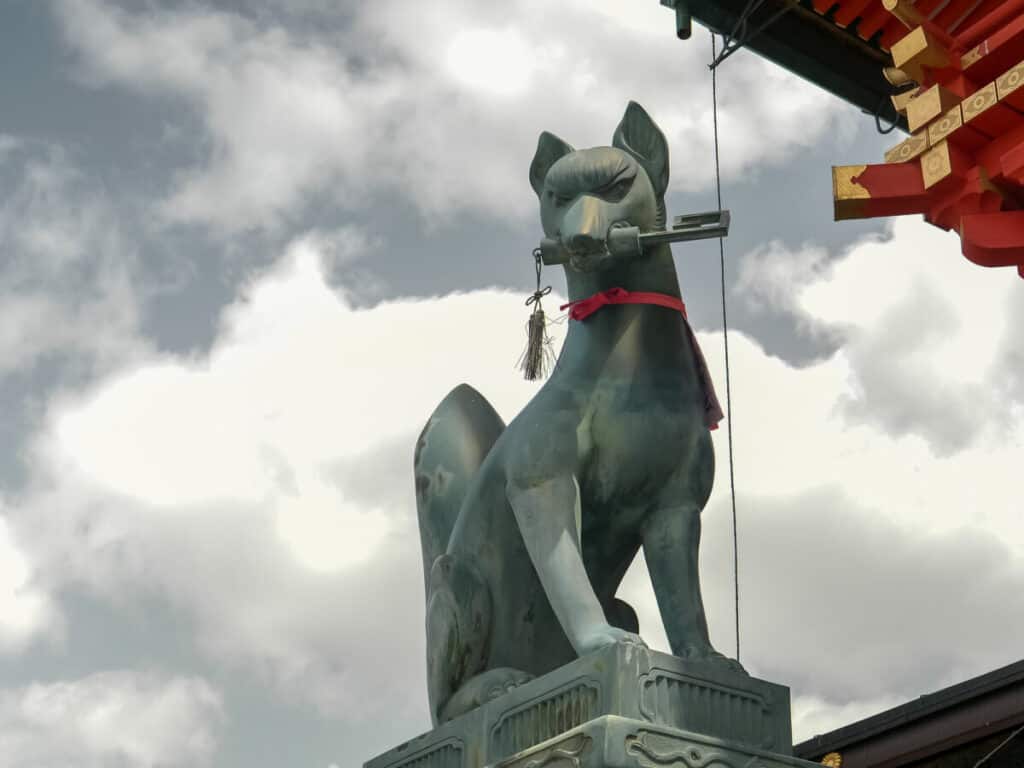
Kami are divine entities from the Shinto religion, one of the most prominent religions in Japan. Gods and deities are typically interchangeable terms that could be a part of multiple faiths.
Raijin And Fujin
These two rami are often depicted together. Raijin is the kami of thunder and lightning, as well as storms. Fujin is the kami of wind.
Thus, they fit together quite well. In their various portrayals, Raijin is holding a hammer and has drums all around him, while Fujin carries a sack of wind.
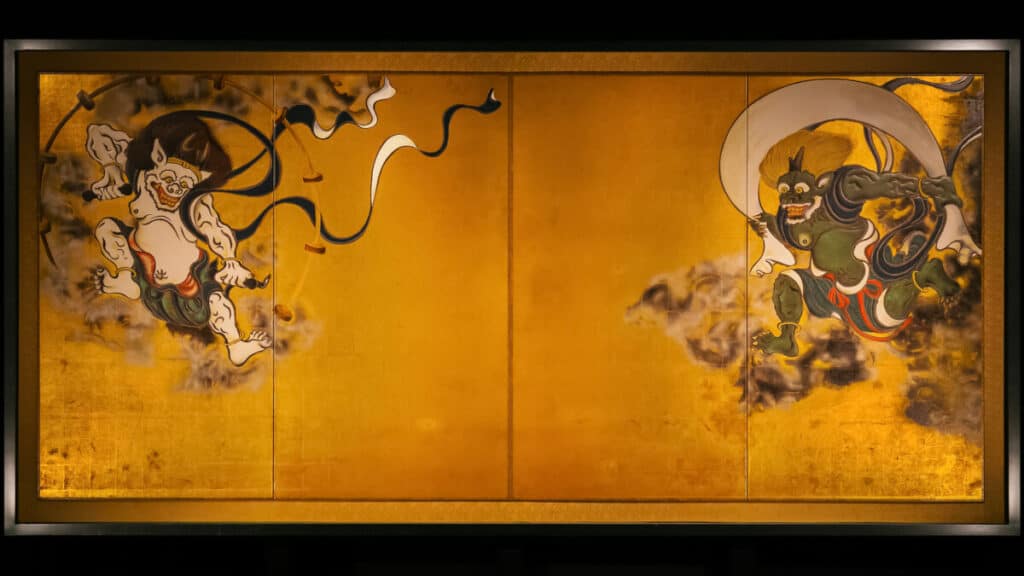
Raijin and Fujin are often sat outside of Buddhist temples in statue form, and Shinto shrines often include statues of the two kami as well.
They are considered guardians to a certain extent, as they have been known to chase away intrusions in the past. For example, it’s believed that they created a kamikaze storm in the 1200s when the Mongols attempted to invade.
Inari
Inari is the kami of rice, sake, tea, and prosperity. The Inari takes the form of a white or dark-colored fox but has also been illustrated as a woman holding rice. A series of fox statues will typically surround any sort of shrine honoring Inari.
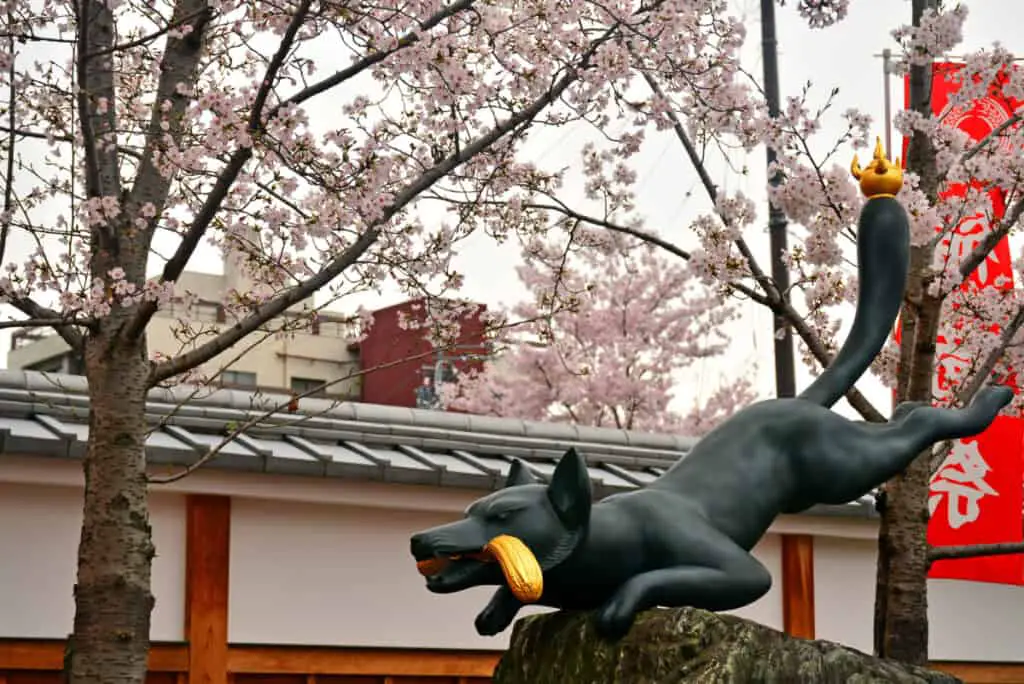
Hachiman
Hachiman has gone by a few names, including Yahata in ancient Shinto religion, and Emperor Ojin. Hachiman is the god of war, warriors and archery, and has characteristics divine to both Shinto and Buddhist faiths.
Because Hachiman is considered to be the spirit of Emperor Ojin, he is also considered a deity to the Imperial Family.
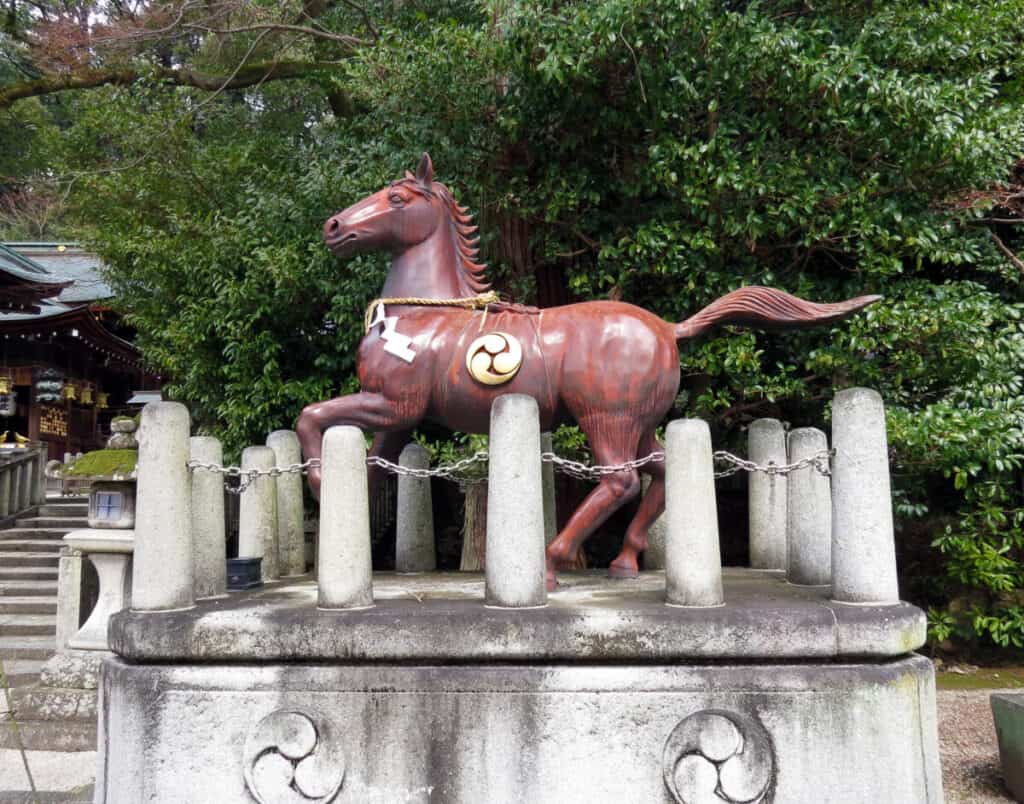
Hachiman is honored very often by fishermen and farmers in the hopes that he will bless them with bountiful catches and crops.
He is also honored by samurai as he is instrumental in determining whether or not a samurai may be victorious in battle.
Amaterasu
Amaterasu is a female kami of the sun. She is considered the goddess of the sun, as well as the goddess of the High Celestial Plain. It is believed that those who have been Emperors have been held in that position due to their ancestral relation to Amaterasu.
She is a predominant kami in the Shinto religion. She is the daughter of Izanami and Izanagi, who are the foremost characters of the Shinto creation myth.
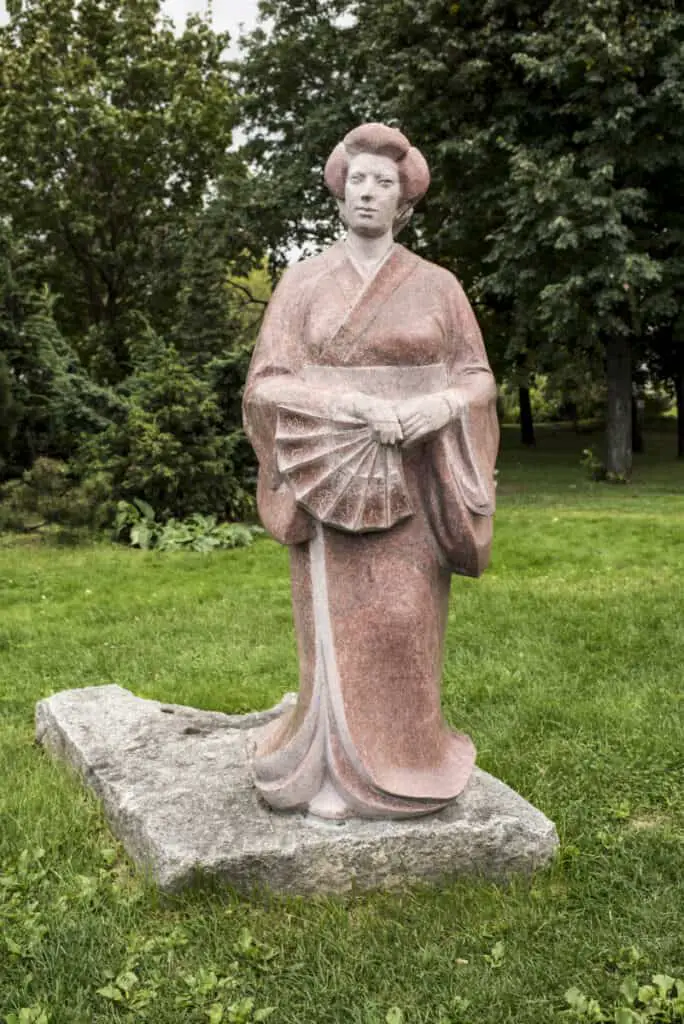
Tsukuyomi
Tsukuyomi is the god of the moon. He is a deity that is said to encapsulate the charm of the moon. He was also the brother of Amaterasu, the kami of the sun.
However, he attempted to kill his sister over food that she prepared for him, leading to Amaterasu disowning him. This is why the sun and moon are opposites.
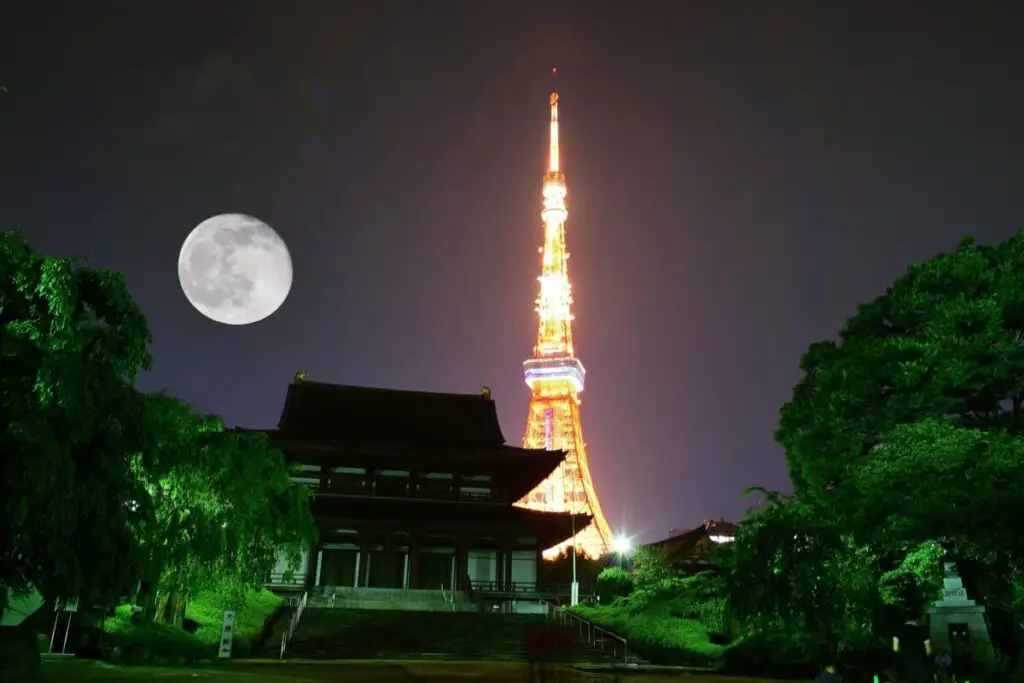
Ebisu
Ebisu is depicted as a very jolly kami, as he is always seen smiling and laughing in illustrations of him. He is one of the Seven Lucky Gods in the Shinto religion, which are gods who showed benevolence throughout their journey and are now held in great esteem as bringers of luck and fortune.
Ebisu is also revered as a god that represents the abundance of the sea. That being said, he is honored by fishermen and tradesmen as one of their deities. Many statues or illustrations of Ebisu include him holding a fishing rod or a fish.
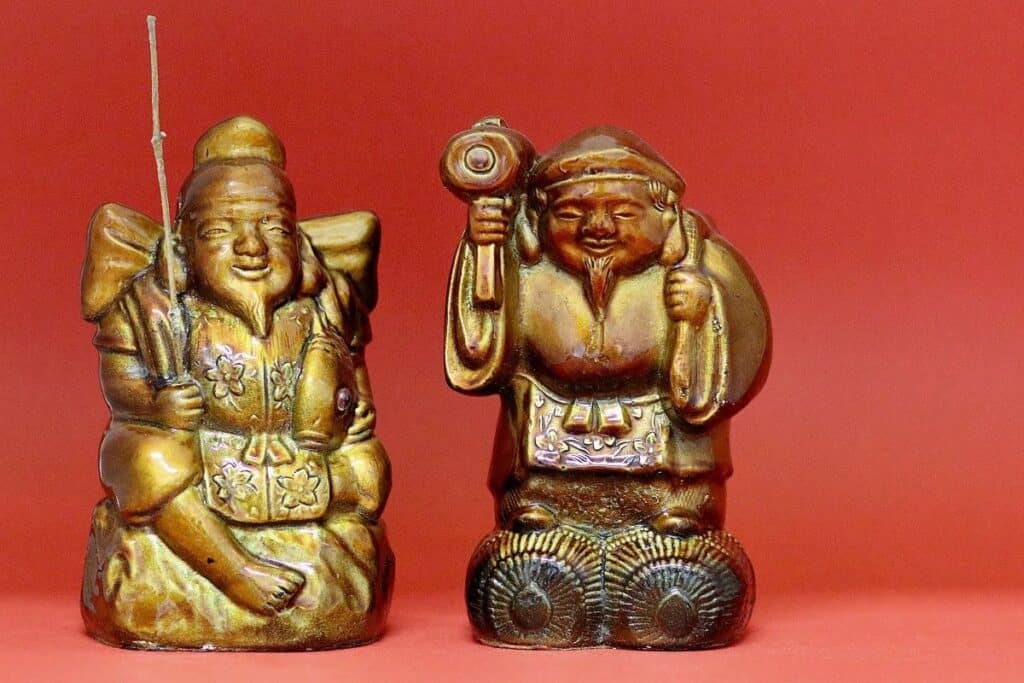
Ame-no-Uzume
Ame-no-Uzume is a female goddess of the dawn who is credited with the invention of the arts of dance and comedy. It is said that, when Amaterasu strayed from the world, Ame-no-Uzume was able to bring her back.
Benzaiten
Benzaiten has the honor of being the only female deity within the Seven Gods of Fortune. She is appreciated in the Buddhist religion and the Shinto religion as a deity of femininity as well as artistic endeavors. Furthermore, Benzaiten is sometimes revered for her association with the sea and good fortune.
Some portrayals of Benzaiten have her playing a lute, or a biwa, and others will show her on a sea dragon. She is also said to be very beautiful, which could be why many geisha will adulate her.
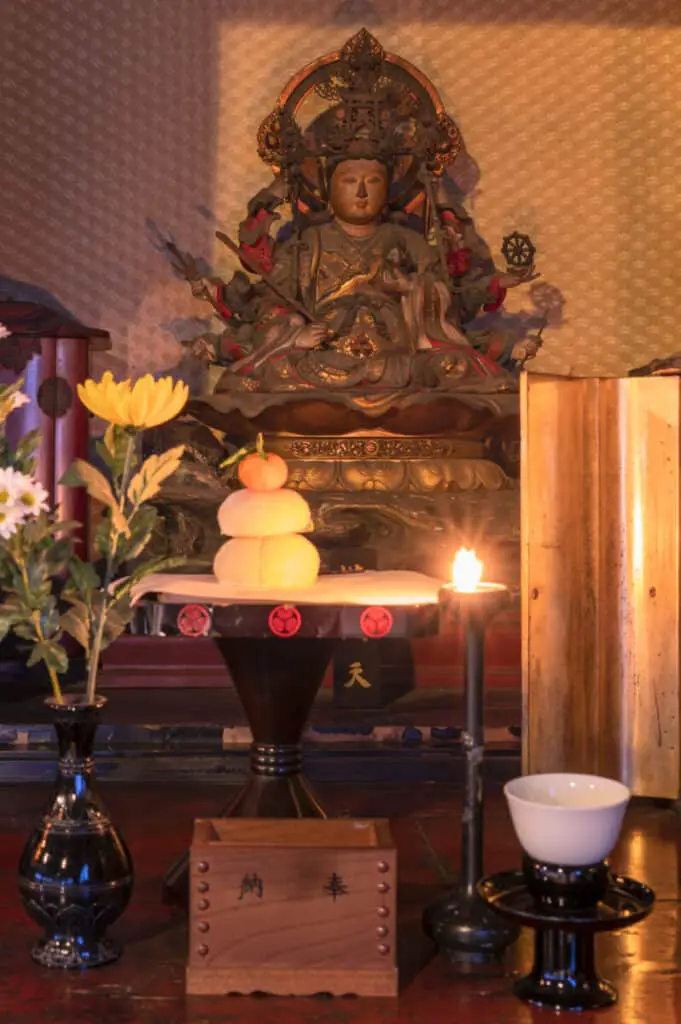
Agyo And Ungyo
These two deities will often be seen together as they are both guards of Buddhist temples. Together, they are known as Nio, and they represent birth and death.
Agyo and Ungyo are both very large and muscular. Agyo is usually seen with or without a club, with his mouth slightly open to say ah, which symbolizes birth. Ungyo typically holds a sword or nothing at all, and his mouth is closed to symbolize the sound of om, which is death.
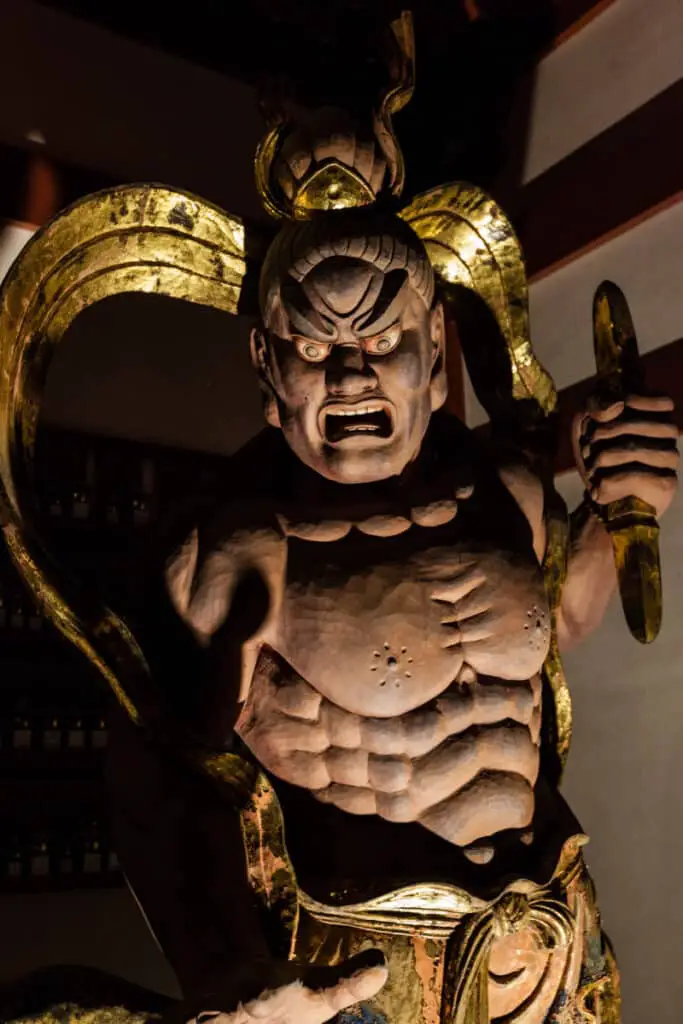
Kannon
Kannon has been pictured in numerous ways, especially during the Edo period where many Japanese Christians displayed statues of Kannon with a child instead of Mary and Jesus. More importantly, Kannon is the goddess of mercy and compassion.
Kannon is also a bodhisattva, which in the Buddhist religion, is someone who is enlightened enough to reach nirvana. Therefore, it’s believed she resides with Amida Buddha in the paradise known as The Pure Land.
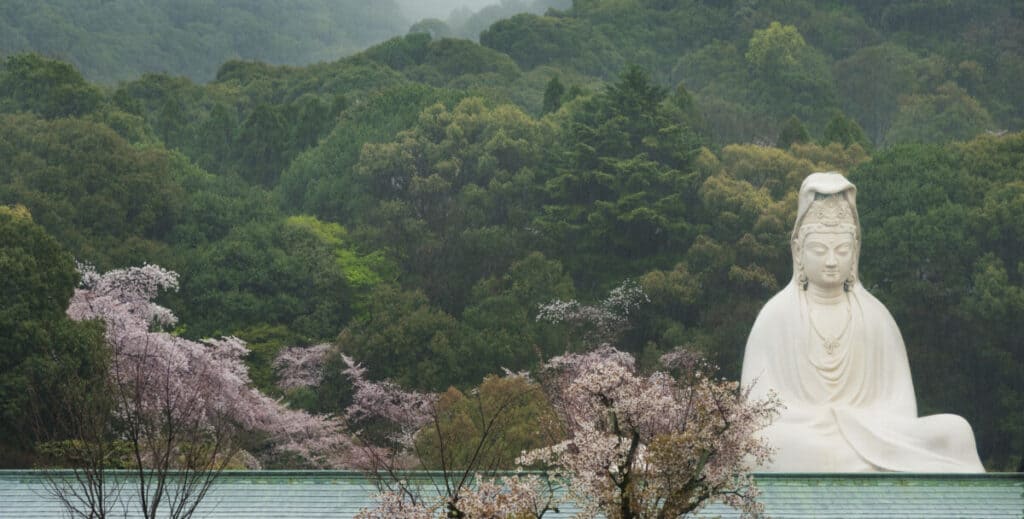
Tenjin
Tenjin actually used to be a human named Sugawara no Michizane before he became known as Tenjin. Fittingly, Tenjin is considered a kami of literature and scholarship, as he was a scholar as a human.
The Fujiwara Clan were not fond of Tenjin, who resided on the Heian court, and thus they pushed him out of his position.
After Michizane passed on, many of his foes began to die, and it was believed that his spirit was responsible for these acts. Therefore, he was made into a deity in order to try and calm his spirit. Now, those who need educational help will honor him at his shrines.
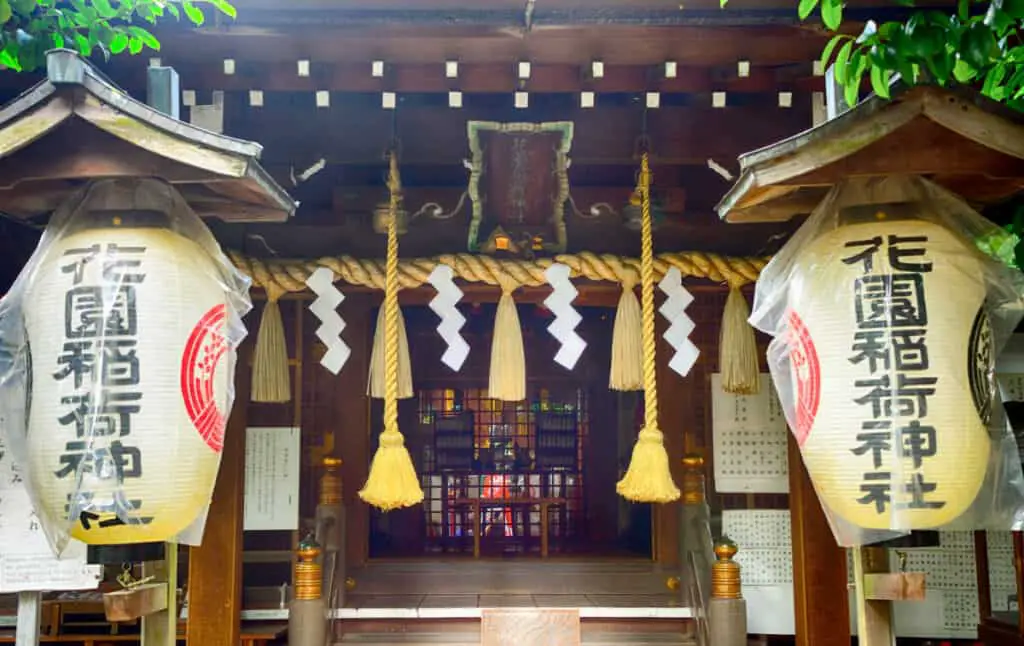
Jizo
Jizo is a Bodhisattva who helps others in their journey to enlightenment. Many statues of him can be found around Japan as they help to offer guidance to those who encounter him.
Jizo is a guardian of children who have passed, especially those who die before their parents do.
It is believed that children who die before their parents are doomed to an afterlife outside of the Sanzu River, which must pass on their way to the afterlife. Therefore, Jizo would smuggle these children past the river.
Many parents who lose children will visit Jizo statues, which are sometimes decorated with children’s toys and accessories.
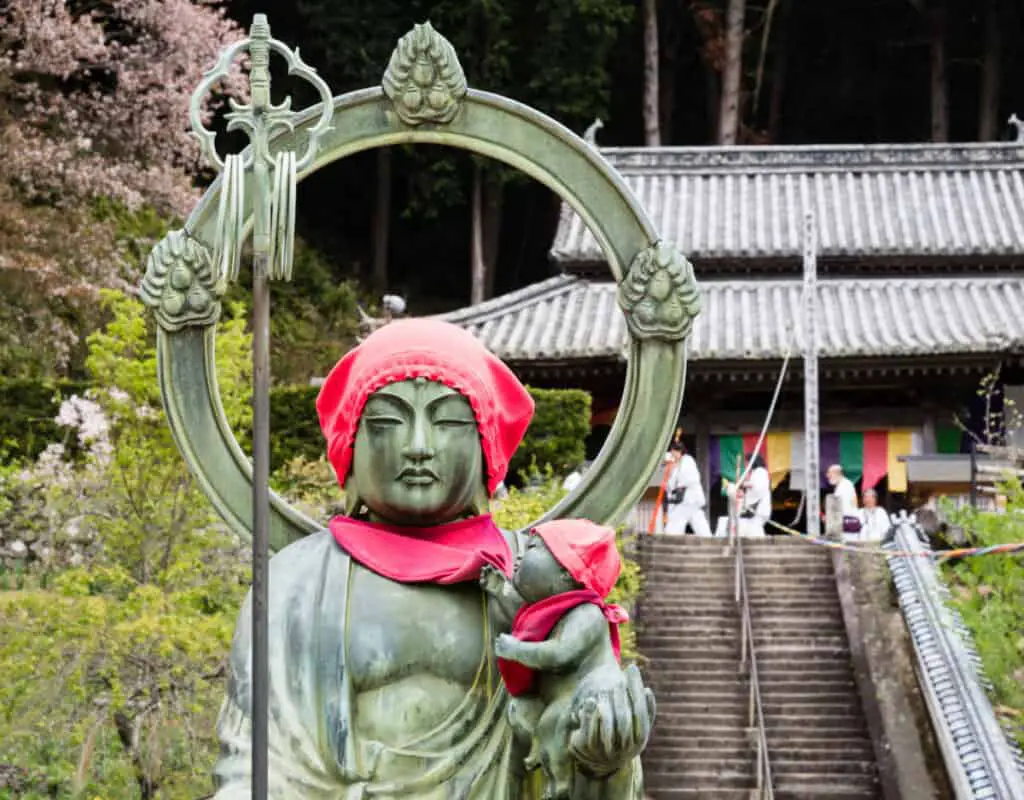
Susanoo
Susanoo is Amaterasu’s brother and the god of seas and storms. He has a reputation for being a little impulsive and disorderly. This would cause tension between him and his sister as well as the eight-headed dragon Orochi.
Izanami and Izanagi
Izanami and Izanagi are regarded as being the creators of the Shinto religion. They are also the parents of many kami, and many kami are also descendants of theirs. It is said that they created Japan by using a spear between Heaven and earth to create land.
However, once Izanami birthed the fire god Kagutsuchi, she died by fire. Izanagi was very upset and ended up taking her corpse and sealing it away. She became angry and in an act of revenge, she swore to take 1000 lives every day. To counteract this, Izanagi promised to have 1500 lives begin each day.
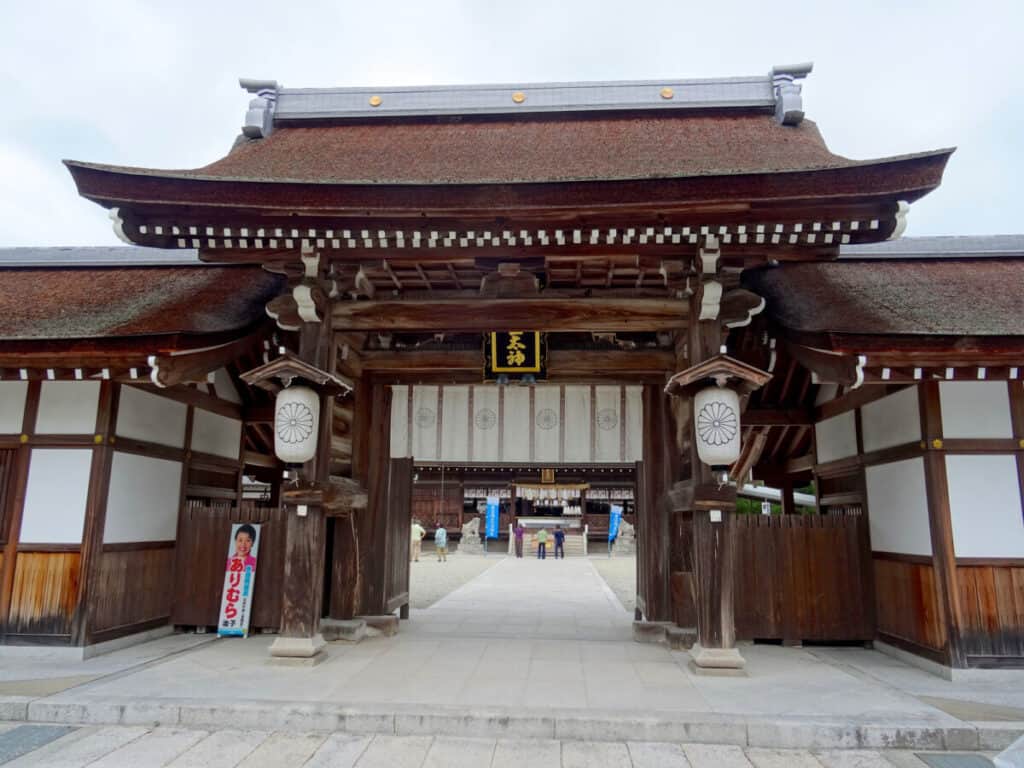
Ninigi
Ninigi is the grandson of Amaterasu. He is revered as being the founder of the Japanese Imperial family. This is because his great-grandson was Emperor Jimmu, the first emperor of Japan. He is also credited with bringing rice and civilization to the land.
In many versions of Ninigi’s tale, he goes down to earth with many other Kami, which start many prominent clans on earth. When he’s there, he meets his wife who is the daughter of the mountain god and ends up getting cursed after refusing one of his daughters. This leads to his and his descendants’ becoming mortal.
Ryujin
Ryujin is believed to be a dragon that is able to transform into a human. He is revered as a deity of the sea, which has been essential to Japan’s survival throughout centuries.
Many who live in communities around Japan that heavily rely on fish and rain will have shrines to Ryujin. He is also part of the Japanese Imperial Family.
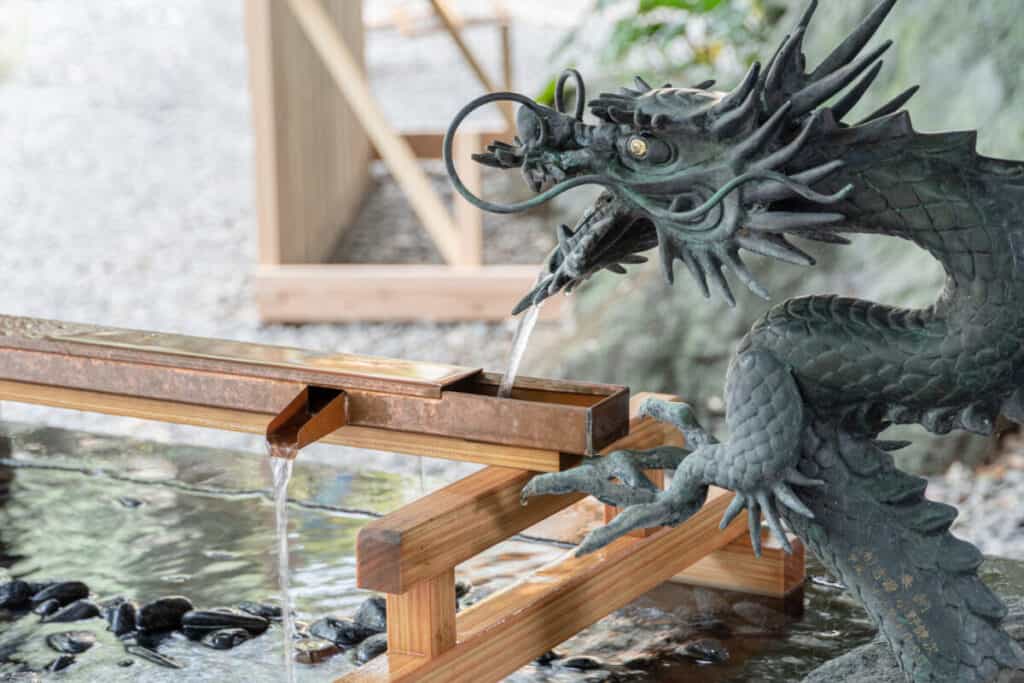
Kisshoten
Kisshoten is a Japanese deity within Buddhism who is said to be very beautiful; thus, she is the goddess of fertility, beauty, and happiness.
It is said that she was derived from Lakshmi, a goddess of Hinduism. Sometimes, she is also considered to be one of the Seven Gods Of Fortune.
In her depictions, she is usually seen carrying a gem in one of her hands.
Daikokuten
Also sometimes referred to as Daikiku, Daikokuten is the Japanese deity of wealth, harvest, and the household. The history of Daikokuten has changed dramatically throughout history, as has his reputation. He has been seen as unenlightened and has also been seen as wise.
Illustrations of Daikokuten have changed over time as well. However, many popular images of him show him with a golden mallet and bags of food such as rice. He is also depicted with many rats or mice around him. He is considered one of the Seven Lucky Gods.
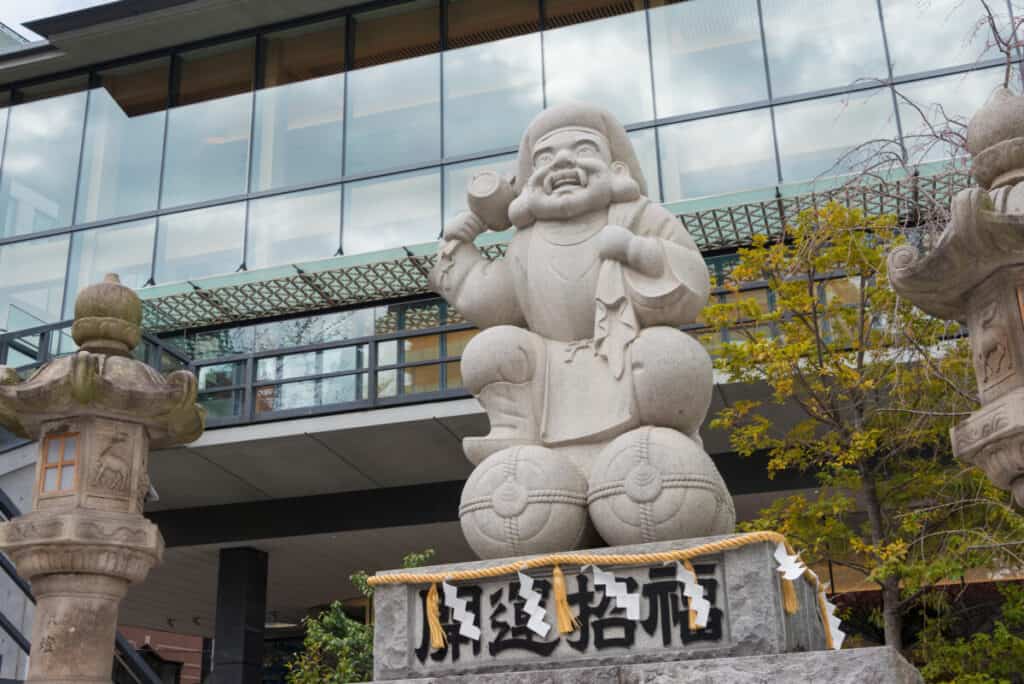
Amida
Amida is known by many names, including Amitabha, Amitayus, or Amida-bust. He is a celestial Buddha and is the central figure of Pure Land Buddhism. He is sometimes also referred to as the Lord of the Beyond and the Afterlife.
Amida’s origins were as a monk and king named Dharmakara who stepped down from his role after learning about Buddhism. He made a series of vows to create a land where those who called on him before death could reside after their death.
Amida was known to have compassion and love for all, and his desire was to help anyone and everyone achieve enlightenment.
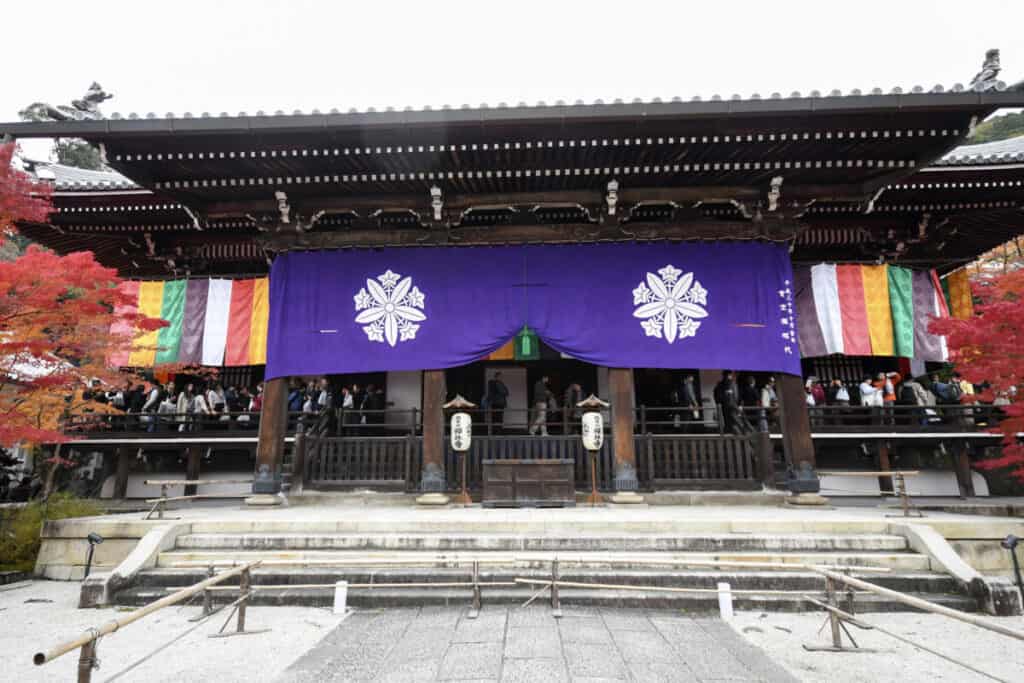
Sarutahiko Okami
Sarutahiko Okami is considered a patron god of martial arts and is also known as the ruler of earthly kami. He is held in high regard, being one of the only kami to be given the title of Okami, meaning great kami.
His large stature could be one of the many reasons he is considered a symbol of strength. His visage is encapsulated in over 2000 shrines throughout Japan.
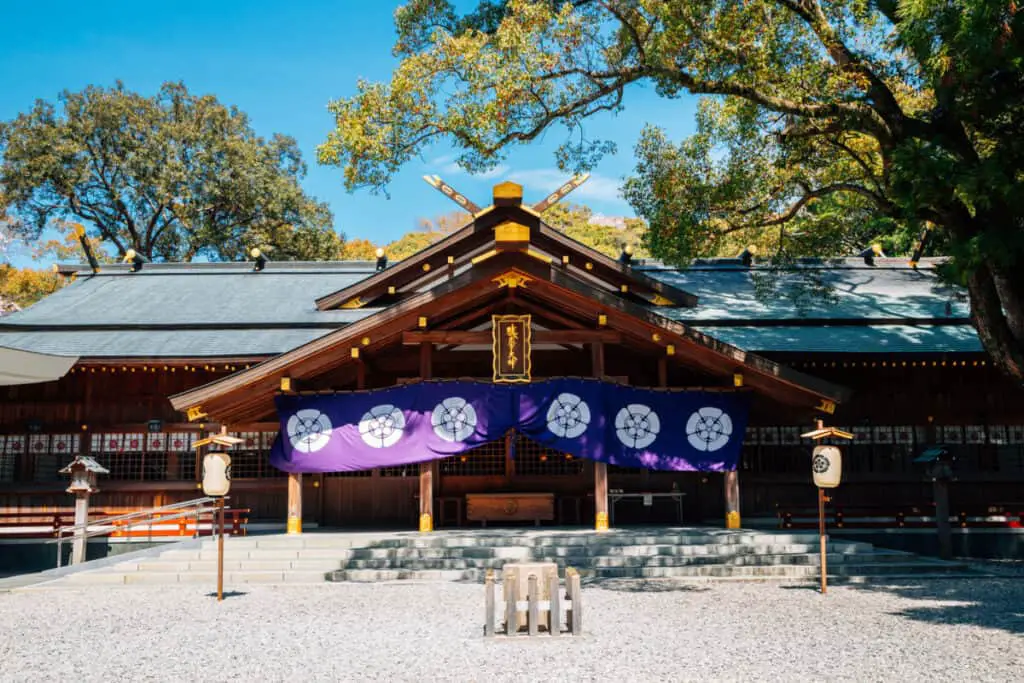
As it can be seen, Japanese culture has been shaped drastically by many gods, deities, and kami. Many of them can be linked to each other or are related to each other in some manner. While their religions are complex and rich with history, they are quite fascinating and inspiring to learn about.

